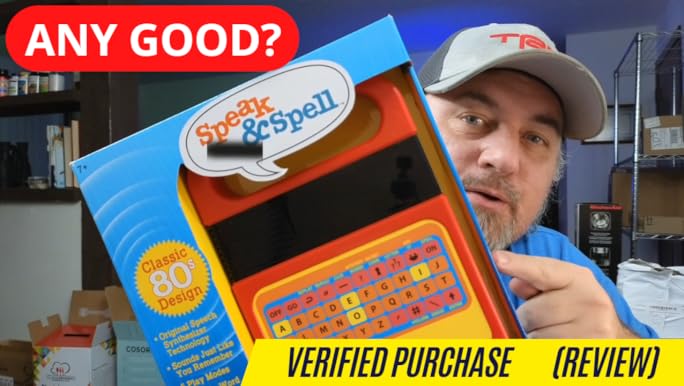The late 1970s and early 1980s were a golden era for innovative educational toys, and one of the standout creations was the Speak and Spell. This handheld electronic device revolutionized the way children learned spelling and pronunciation. In this article, we explore the history of Speak and Spell, its technological advancements, cultural impact, and enduring legacy.
The Birth of Speak and Spell
The Speak and Spell was developed by Texas Instruments, a company known for its advancements in semiconductor technology. The idea was conceived in the mid-1970s by a team of engineers led by Paul Breedlove.
Their goal was to create an educational tool that could help children improve their spelling and pronunciation skills through interactive play. The Speak and Spell made its debut at the Summer Consumer Electronics Show in June 1978, marking the beginning of a new era in educational toys.

The Technology Behind Speak and Spell
The Speak and Spell was groundbreaking for its time, featuring a speech synthesizer that could articulate words and phrases. This was made possible by the TMC0280 chip, also known as the “Speak & Spell” chip, which utilized a form of linear predictive coding to generate speech.
The device also included a keyboard for input and a display screen that showed the words being spelled. The combination of these technologies allowed the Speak and Spell to provide real-time feedback and interactive learning experiences.
Speak and Spell Hits the Market
Upon its release, the Speak and Spell quickly gained popularity among parents and educators. Its innovative design and educational value made it a sought-after tool for teaching children how to spell and pronounce words correctly.
The device’s portability and ease of use added to its appeal, making it a staple in homes and classrooms across the country. By the end of 1978, the Speak and Spell had become one of the top-selling educational toys.
The Educational Impact of Speak and Spell
The Speak and Spell had a profound impact on educational practices. It introduced a new way of learning that combined technology with traditional teaching methods. The device’s interactive nature made learning more engaging and enjoyable for children, helping to improve their spelling and pronunciation skills. Educators praised the Speak and Spell for its ability to provide immediate feedback, which was crucial for reinforcing correct spelling and pronunciation.

Speak and Spell in Popular Culture
The Speak and Spell’s influence extended beyond the realm of education. It became a cultural icon, appearing in various TV shows, movies, and advertisements. One of its most notable appearances was in the 1982 film “E.T. the Extra-Terrestrial,” where it was used by the titular character to create a communication device. This exposure helped cement the Speak and Spell’s status as a beloved gadget of the 1980s.
The Legacy of Speak and Spell
Despite advancements in technology, the Speak and Spell remains a cherished piece of nostalgia for many who grew up in the 1970s and 1980s. Its innovative design and educational impact have left a lasting legacy, influencing the development of modern educational tools and toys. The Speak and Spell’s success paved the way for future innovations in interactive learning, making it a significant milestone in the history of educational technology.

The Speak and Spell was more than just a toy; it was a revolutionary educational tool that changed the way children learned spelling and pronunciation. Its innovative technology, cultural impact, and enduring legacy have ensured its place in the annals of educational history. As we look back on the history of the Speak and Spell, we are reminded of a time when technology and education came together to create something truly remarkable.



